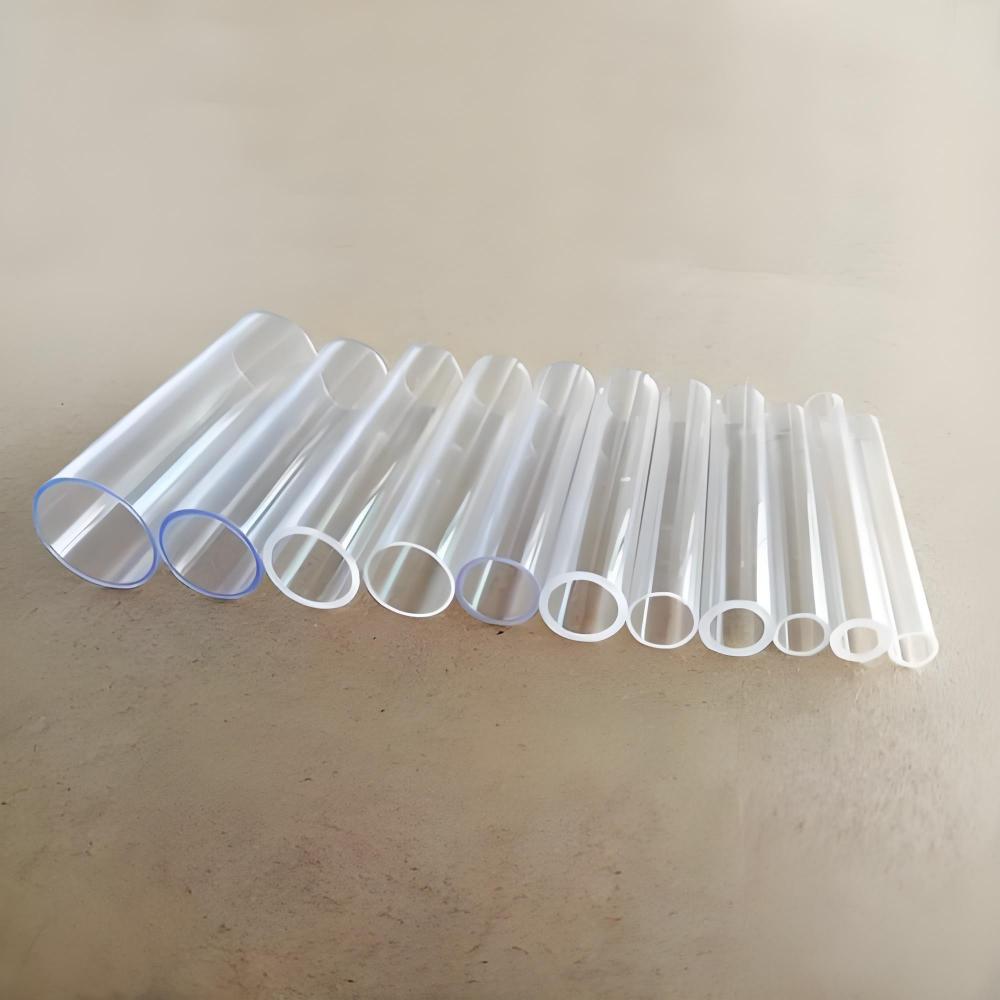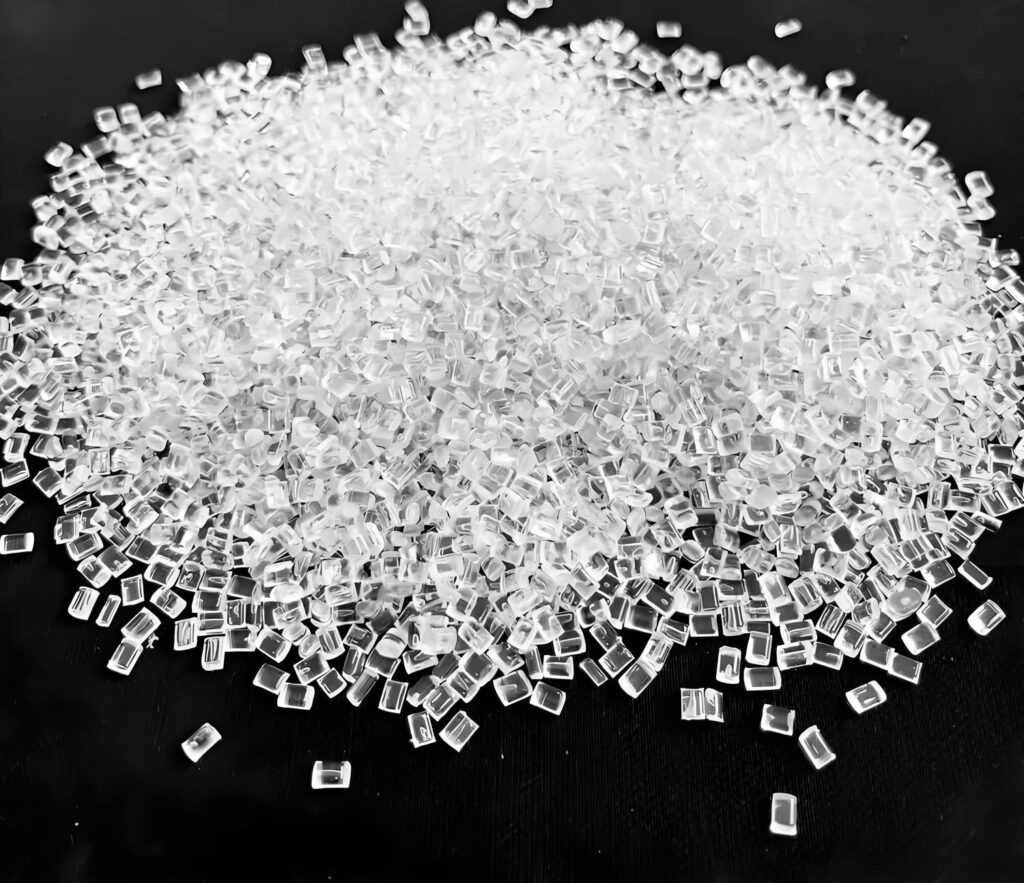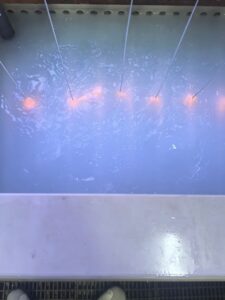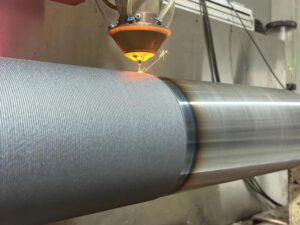Polycarbonate has become one of the most widely used thermoplastics in modern manufacturing, valued for its strength, clarity, and flexibility. Alongside materials like ABS (Acrylonitrile Butadiene Styrene), it provides manufacturers with a versatile solution for creating durable, precise components. From aerospace and automotive to consumer electronics, polycarbonate’s unique properties make it an essential choice for industries requiring both reliability and aesthetic appeal.
This article explores polycarbonate’s characteristics, types, production process, applications, and why it’s favored over other plastics like ABS in machining.
What is Polycarbonate (PC)?
Polycarbonate, often referred to as PC, is a high-performance thermoplastic known for its toughness and transparency. Its chemical structure includes carbonate groups, giving it a unique combination of strength and flexibility. Unlike glass or standard plastics, polycarbonate can withstand high-impact forces without shattering, making it ideal for protective equipment, lenses, and precision housings.

Compared to ABS, polycarbonate generally offers higher impact resistance and better heat tolerance, although ABS can be more cost-effective and easier to process in some applications.
Properties of Polycarbonate
Polycarbonate’s properties make it a favorite in both industrial and consumer applications.
Mechanical Properties:
- High Impact Resistance: Up to 250 times stronger than glass, perfect for safety shields and helmets.
- Flexibility: Can bend without breaking, absorbing shock efficiently.
- Temperature Stability: Performs well from -40°F to 280°F (-40°C to 138°C).
- Machinability: CNC milling, cutting, and drilling are straightforward without cracking.
Physical Properties:
- Optical Clarity: Transparent like glass, ideal for displays, covers, and lenses.
- Lightweight: Roughly half the weight of glass, simplifying handling and installation.
- UV Resistance: UV-stabilized grades prevent yellowing in outdoor applications.
- Customizable: Can be colored, tinted, or coated without losing structural integrity.
What Are the Types of Polycarbonate Plastic?
Polycarbonate comes in various forms, each tailored to specific needs and applications. The most common types include:
Clear Polycarbonate:
This is the standard form, known for its glass-like transparency. It’s widely used in optical lenses, medical devices, and protective covers.
Tinted Polycarbonate:
Available in various shades, tinted PC is used for applications like sunglasses, automotive headlight lenses, and privacy panels.
UV-Stabilized Polycarbonate:
Designed for outdoor use, this type resists yellowing and degradation from sunlight, making it ideal for roofing and signage.
Abrasion-Resistant Polycarbonate:
Coated to resist scratches, this variant is perfect for high-wear applications like machine guards and display screens.
Flame-Retardant Polycarbonate:
Engineered to meet strict fire safety standards, this type is used in electrical enclosures and public transportation components.
Each type can be machined with precision, allowing manufacturers to choose the variant that best suits their project’s requirements. For instance, clear polycarbonate might be selected for medical device housing, while UV-stabilized PC could be used for outdoor architectural features.
How Polycarbonate is Made
Polycarbonate is created through a polymerization process, typically involving bisphenol A (BPA) and phosgene, resulting in long chains of carbonate groups. These chains give the material its toughness and flexibility. The resulting resin is formed into sheets, rods, or pellets for machining or molding.
In modern manufacturing, polycarbonate is precisely cut, drilled, or milled using CNC machines, retaining its strength and clarity even in complex geometries. Compared to ABS, it offers superior heat and impact resistance, making it suitable for demanding applications.
Applications of Polycarbonate
Polycarbonate’s versatility makes it indispensable across industries:
- Machining & Manufacturing: Precision parts such as gears, housings, and bearings.
- Safety Equipment: Helmets, riot shields, and protective panels.
- Automotive & Aerospace: Headlight lenses, interior panels, and aircraft windows.
- Consumer Electronics: Smartphone screens, water bottles, and durable household items.
- Construction: Roofing, skylights, and glazing panels.
While ABS is commonly used for enclosures and lightweight components, polycarbonate excels where durability, impact resistance, or transparency is critical.
Advantages and Considerations
Advantages:
- Outstanding impact resistance for safety-critical applications.
- Clear, glass-like transparency for optical and aesthetic uses.
- Lightweight and easy to handle.
- Highly machinable for complex, precision components.
- Available in multiple grades for tailored performance.
Considerations:
- Scratches easily without protective coatings.
- Standard PC may yellow under prolonged sunlight; UV-stabilized grades solve this.
- Cost is higher than ABS or acrylic for some projects.
- Sensitive to certain chemicals, requiring careful handling.
By understanding these factors, manufacturers can select polycarbonate when high strength, clarity, and performance are essential.
Why Polycarbonate Matters in Machining
Polycarbonate’s combination of durability, clarity, and machinability makes it a preferred choice for precision manufacturing. Its ability to be shaped into intricate designs while maintaining strength ensures reliability across applications. Companies that specialize in CNC machining often choose polycarbonate over ABS when the final product demands impact resistance or transparency.
As technology advances, polycarbonate remains a cornerstone material, providing machining engineers with a balance of performance, versatility, and sustainability.




